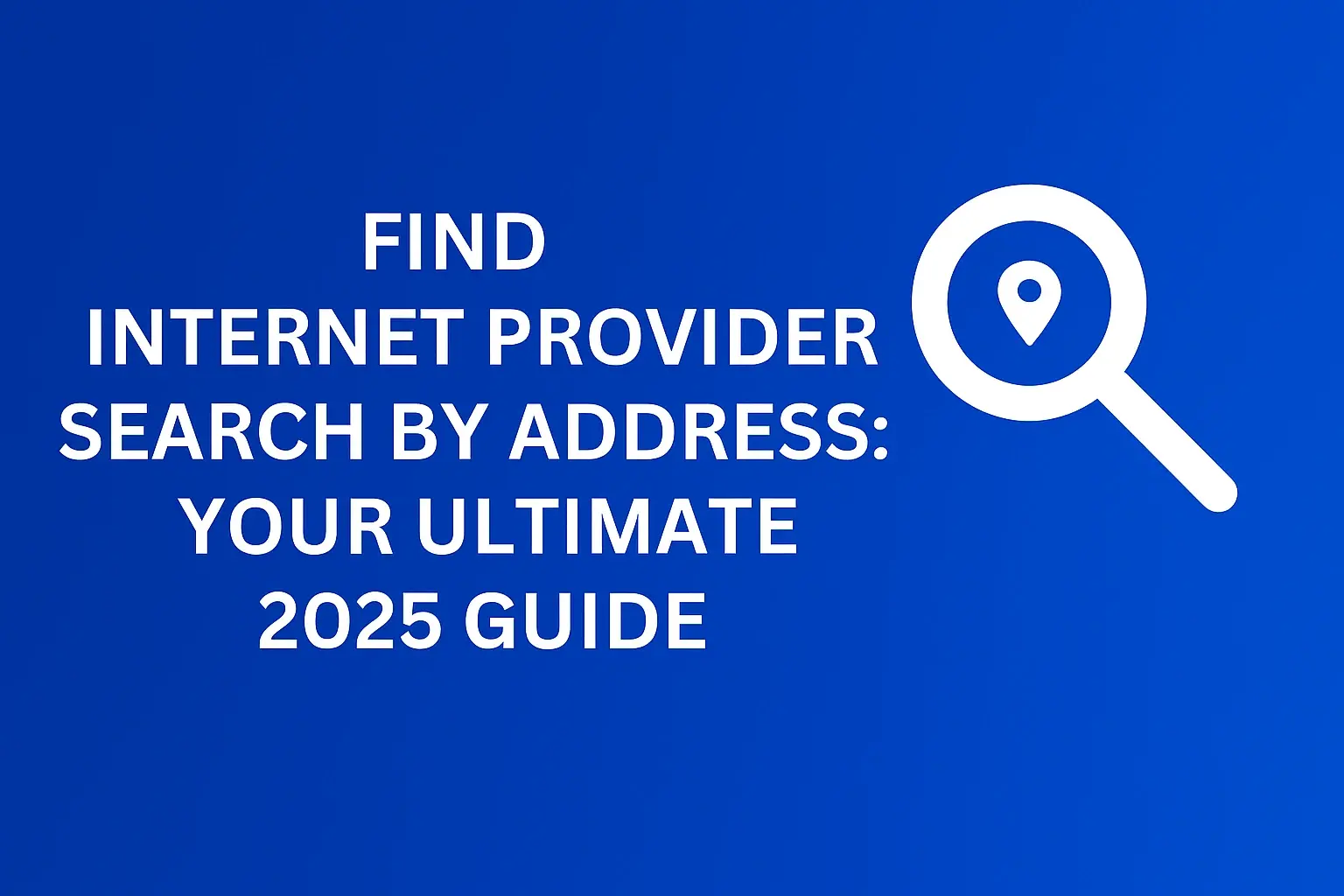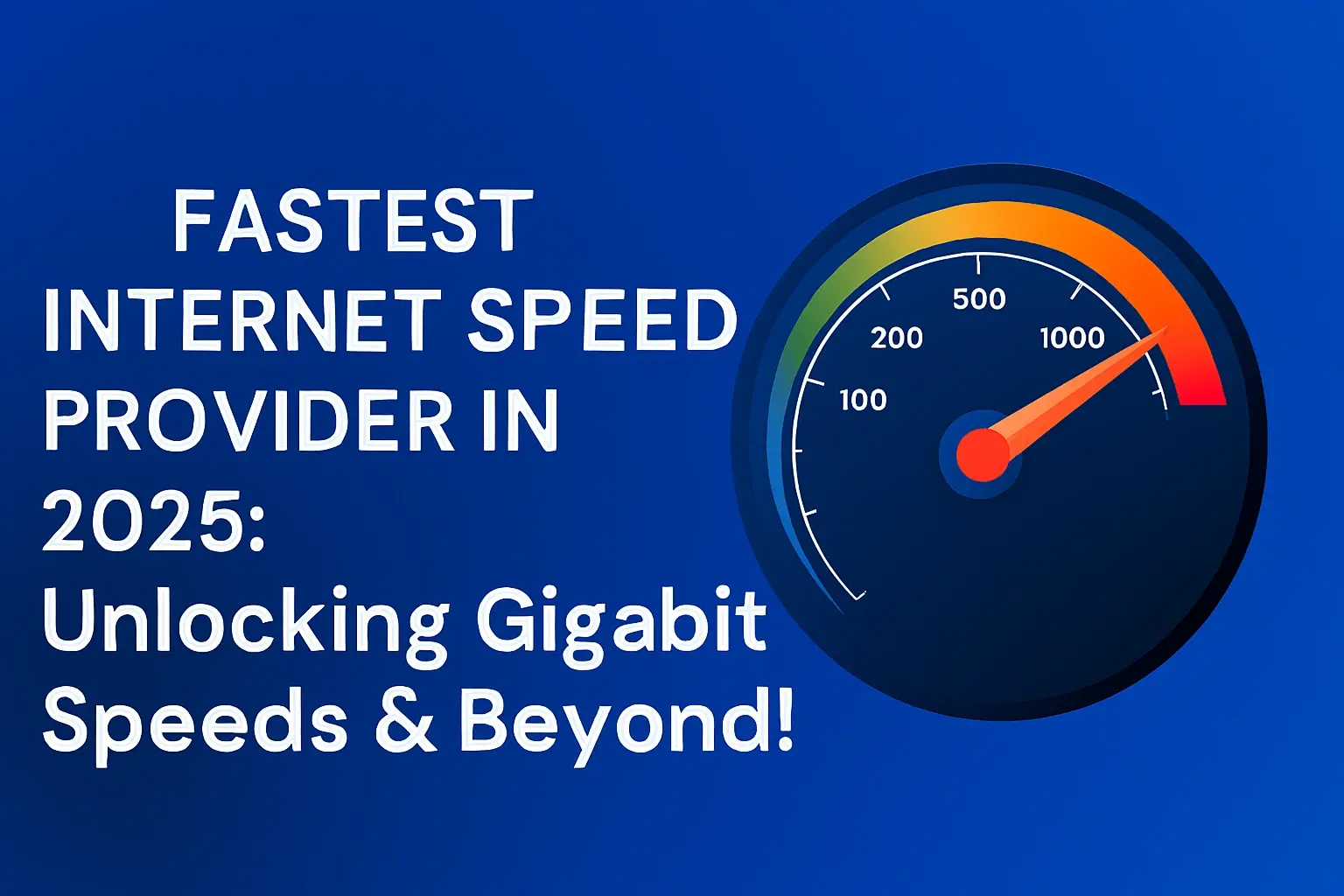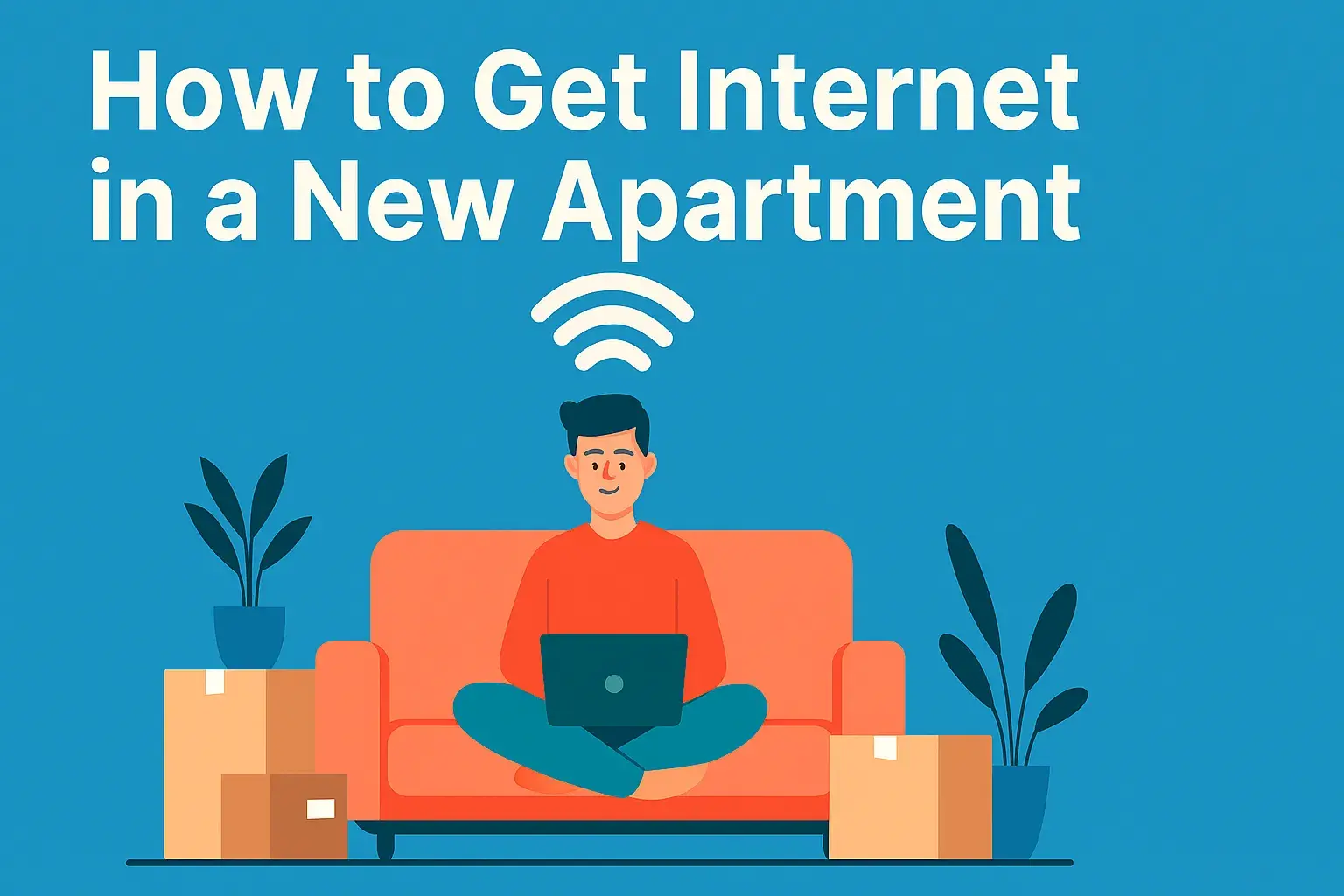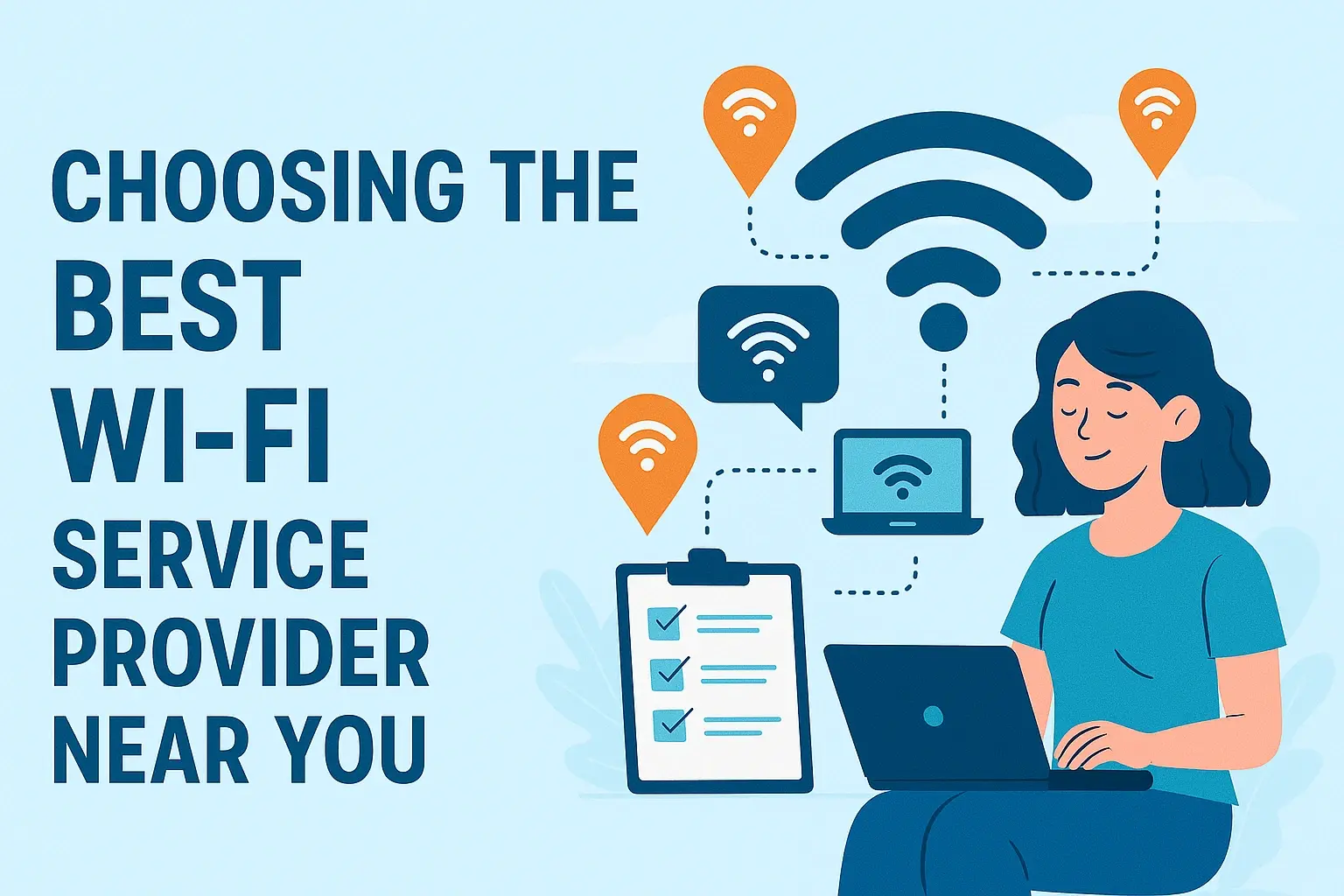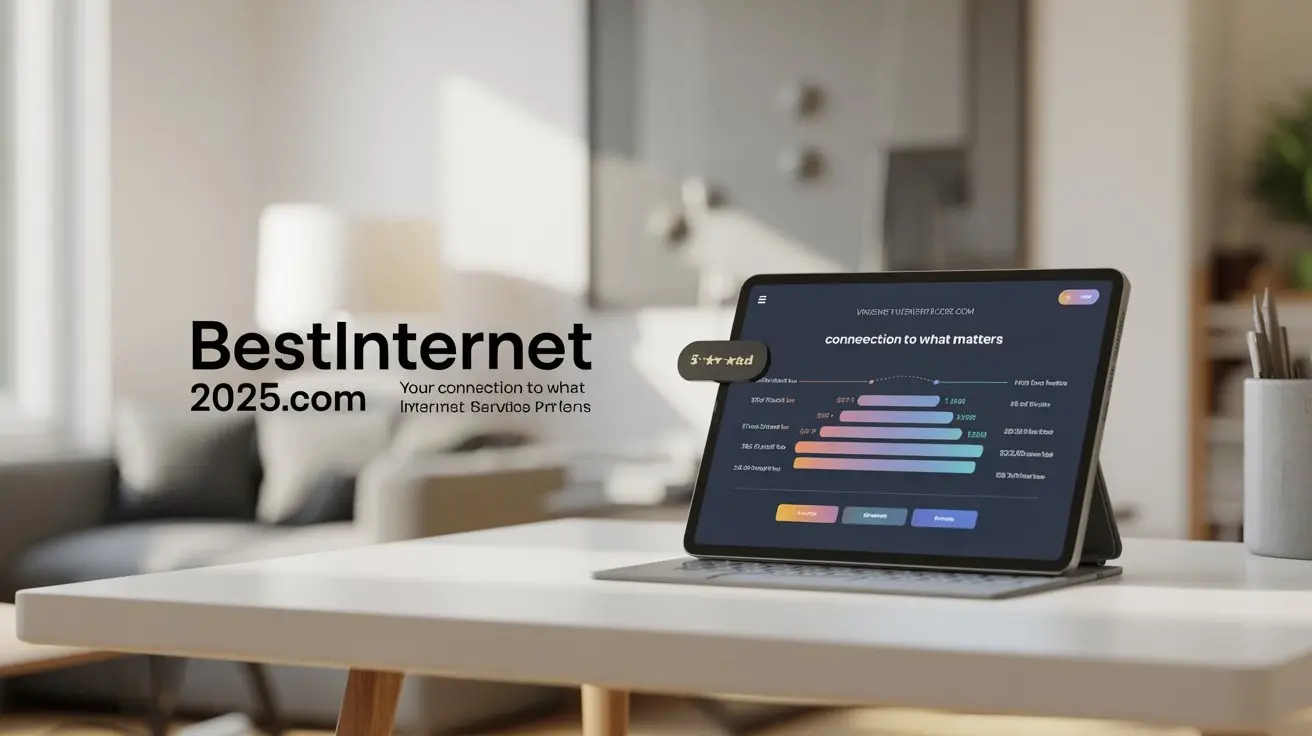Difference Between Download Upload Internet Speeds
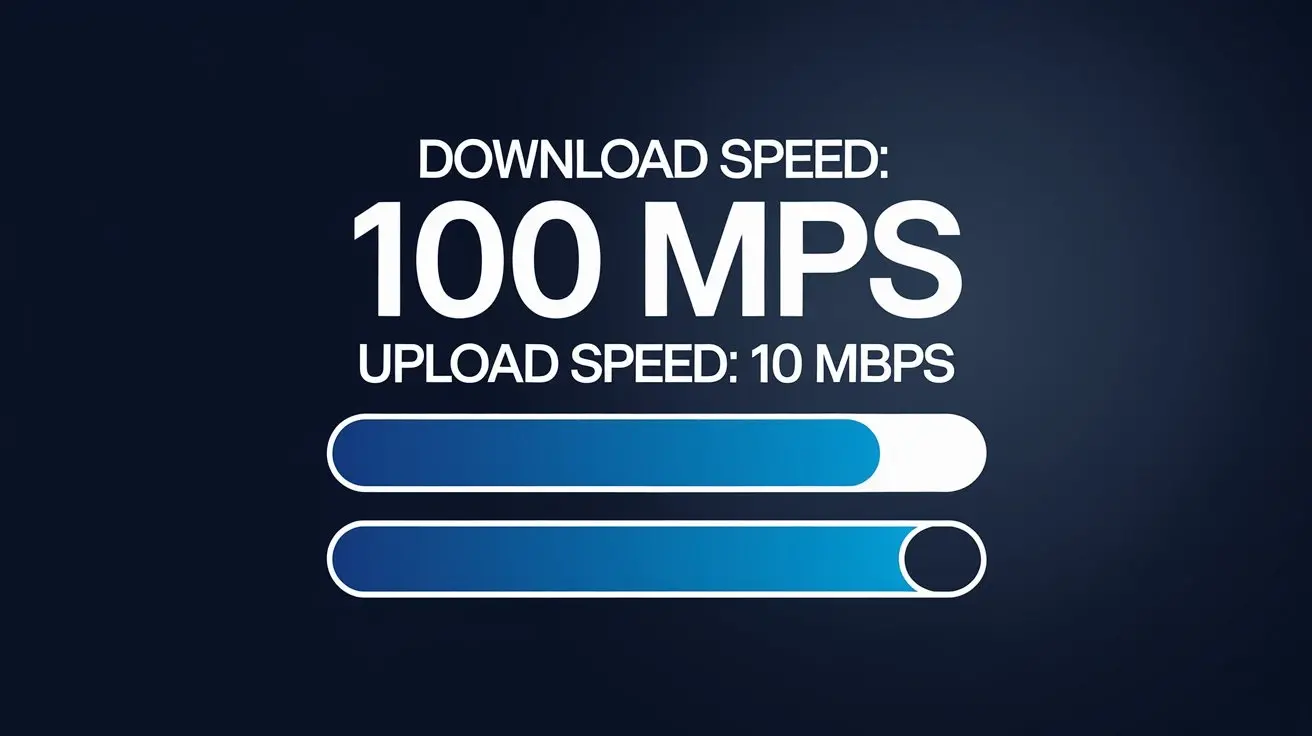
Understanding the difference between download and upload internet speeds is crucial for optimizing your online experience. This guide demystifies these concepts, explains their impact on daily tasks, and provides actionable insights to help you choose the right internet plan in 2025.
Understanding Internet Speeds: The Core Concepts
In the digital age, internet speed is a fundamental aspect of our online lives. Whether we're streaming high-definition movies, participating in video conferences, or simply browsing the web, the speed at which data travels to and from our devices significantly impacts our experience. When discussing internet speed, two primary metrics emerge: download speed and upload speed. While often mentioned together, they represent distinct directions of data flow and serve different purposes. Understanding the fundamental difference between download and upload internet speeds is key to troubleshooting connectivity issues, choosing the most suitable internet plan, and maximizing your online productivity and entertainment.
Think of your internet connection as a two-way highway. Download speed refers to how quickly data travels from the internet to your device, while upload speed refers to how quickly data travels from your device to the internet. The vast majority of everyday internet activities rely heavily on download speed, which is why it's often the headline figure advertised by internet service providers (ISPs). However, upload speed is equally important for specific tasks, particularly those involving sending data outwards, such as video calls, cloud backups, or uploading large files.
The unit of measurement for both download and upload speeds is typically megabits per second (Mbps). A higher Mbps value indicates a faster connection. For instance, a connection with 100 Mbps download speed can transfer 100 million bits of data per second from the internet to your device. Similarly, a 20 Mbps upload speed means 20 million bits of data can be transferred from your device to the internet per second.
In 2025, the average broadband download speed in the United States is projected to be around 150 Mbps, with upload speeds often significantly lower, averaging about 20 Mbps for many residential plans. Fiber optic connections, however, are increasingly offering symmetrical speeds, meaning download and upload speeds are equal, which is a significant advantage for power users. This guide will delve deeper into each of these speeds, their implications, and how to ensure your connection is optimized for your specific needs.
Data Flow Analogy
To better grasp the concept, let's use an analogy. Imagine you're ordering a book online. The process of receiving the book (the data) from the online store (the internet) to your doorstep (your device) is analogous to downloading. The speed at which the delivery truck arrives with your book represents your download speed. Conversely, if you were to send a manuscript to a publisher via email, the process of sending that manuscript from your computer (your device) to the publisher's server (the internet) is analogous to uploading. The speed at which your email is sent represents your upload speed.
This fundamental distinction is crucial because most internet activities involve receiving information. When you browse websites, watch videos, or stream music, your device is constantly downloading data. However, as online interactions become more dynamic, with increased use of video conferencing, cloud storage, and content creation, upload speed is gaining prominence. Understanding this duality will empower you to make informed decisions about your internet service.
Download Speed: What It Is and Why It Matters
Download speed is arguably the most discussed aspect of internet connectivity because it directly influences the performance of the majority of our daily online activities. It measures the rate at which data is transferred from the internet to your device. This includes everything from loading a webpage, streaming a video, downloading a file, to playing an online game. The faster your download speed, the quicker these actions will complete, leading to a smoother and more enjoyable online experience.
When you click on a link, your browser initiates a request to a server somewhere on the internet. That server then sends the requested information – text, images, videos, code – back to your device. The speed at which this information arrives is your download speed. For activities like streaming, a higher download speed ensures that the video plays without buffering, even at high resolutions like 4K. For downloading files, a faster download speed means larger files will be transferred in a fraction of the time.
Key activities heavily reliant on download speed:
- Streaming video content (Netflix, YouTube, Hulu)
- Streaming music (Spotify, Apple Music)
- Browsing websites and loading pages
- Downloading files (software, documents, photos)
- Online gaming (receiving game data and updates)
- Video conferencing (receiving video and audio feeds)
In 2025, the demand for higher download speeds continues to grow. The proliferation of 4K and even 8K streaming, increasingly complex web applications, and the sheer volume of data involved in modern digital content mean that lower download speeds can lead to significant frustration. For instance, streaming a 4K movie typically requires a minimum download speed of 25 Mbps, while a smooth 1080p HD stream might need around 5 Mbps. For households with multiple users streaming simultaneously, these requirements multiply, making a robust download speed essential.
The type of internet connection you have plays a significant role in your download speeds. Fiber optic connections generally offer the highest download speeds, often exceeding 1 Gbps (1000 Mbps). Cable internet is the next best option, with average download speeds ranging from 50 Mbps to over 500 Mbps. DSL, which uses telephone lines, typically offers lower download speeds, usually between 5 Mbps and 100 Mbps. Satellite internet is generally the slowest, with download speeds that can vary significantly but are often below 100 Mbps.
Download Speed Requirements in 2025
As of 2025, here are general recommendations for download speeds based on typical usage:
- Basic Browsing & Email: 5-10 Mbps
- Streaming HD Video (1080p) & Light Gaming: 25-50 Mbps
- Streaming 4K Video & Multiple Users: 50-100 Mbps
- Heavy Online Gaming & 4K/8K Streaming for Multiple Users: 100+ Mbps
- Fiber Optic for Power Users & Future-Proofing: 500 Mbps - 1 Gbps+
It's important to note that advertised speeds are often "up to" these figures, and actual speeds can be affected by network congestion, the quality of your equipment (router, modem), and the distance from the ISP's network hub. Therefore, choosing an ISP and plan that consistently delivers speeds well above your minimum requirements is advisable.
Upload Speed: The Other Side of the Coin
While download speed gets most of the attention, upload speed is equally critical for a complete and functional internet experience, especially in today's increasingly interactive online environment. Upload speed measures the rate at which data is transferred from your device to the internet. This is essential for any activity where you are sending information outwards.
Consider the scenarios where you are the sender of data: sending an email with large attachments, uploading photos or videos to social media or cloud storage, participating in a video conference where your video and audio are being transmitted, or playing online games where your actions are sent to the game server. All these actions depend on your upload speed. If your upload speed is too low, these activities can become sluggish, choppy, or even impossible.
Key activities heavily reliant on upload speed:
- Video conferencing (Zoom, Google Meet, Microsoft Teams)
- Uploading files to cloud storage (Google Drive, Dropbox, OneDrive)
- Uploading photos and videos to social media platforms
- Online gaming (sending commands and actions to the server)
- Live streaming (Twitch, YouTube Live)
- Sending large email attachments
- Backing up data to the cloud
- Using VoIP (Voice over Internet Protocol) services
In 2025, the importance of upload speed has surged due to the widespread adoption of remote work, online education, and content creation. Many individuals now rely on video calls for professional and personal communication, and a low upload speed can result in a pixelated video feed, dropped audio, or a frozen screen for others on the call. Similarly, professionals who regularly upload large project files or content creators who stream their work need substantial upload bandwidth to do so efficiently.
Unfortunately, many traditional internet technologies, such as cable and DSL, are asymmetrical, meaning they offer significantly higher download speeds than upload speeds. This is because the infrastructure was primarily designed for content consumption (downloading) rather than content creation (uploading). For example, a common cable internet plan might offer 200 Mbps download but only 10 Mbps upload. This disparity can be a bottleneck for users who engage in data-intensive uploading activities.
Upload Speed Requirements in 2025
Here are general recommendations for upload speeds in 2025:
- Basic Email & Browsing: 1-3 Mbps
- Video Conferencing (occasional, low quality): 3-5 Mbps
- Video Conferencing (frequent, HD quality) & Cloud Syncing: 5-10 Mbps
- Uploading Large Files (e.g., to cloud storage) & Live Streaming (basic): 10-25 Mbps
- Professional Content Creation, High-Quality Live Streaming, Symmetrical Speeds: 25 Mbps+ (often 50 Mbps or 100 Mbps for serious users)
The ideal scenario for many users, especially those working from home or engaging in content creation, is to have symmetrical speeds, where download and upload speeds are equal. Fiber optic internet is the primary technology that offers this, providing a consistent and robust connection for both downloading and uploading. As fiber deployment expands in 2025, it's becoming a more accessible option for achieving true symmetrical bandwidth.
Download vs. Upload Speed: Key Differences Summarized
To clarify the distinction, let's present a direct comparison of download and upload speeds. Understanding these differences helps in evaluating internet plans and troubleshooting performance issues.
| Feature | Download Speed | Upload Speed |
|---|---|---|
| Direction of Data Flow | Internet to your device | Your device to the internet |
| Primary Function | Receiving data (content consumption) | Sending data (content creation, communication) |
| Key Activities Affected | Streaming video/music, browsing, downloading files, online gaming (receiving data) | Video conferencing, uploading files, live streaming, online gaming (sending actions), sending emails with attachments |
| Typical Measurement Unit | Megabits per second (Mbps) | Megabits per second (Mbps) |
| Common Perception | Often the headline figure, considered more important for general users | Crucial for interactive and content-creation tasks, often overlooked but increasingly important |
| Technology Impact | Generally higher on most internet technologies (cable, DSL, fiber) | Often significantly lower than download speeds on cable and DSL; symmetrical on fiber |
| Impact of Low Speed | Buffering, slow page loads, lag in downloads | Choppy video calls, slow uploads, dropped connections for senders, lag in sending commands in games |
The core difference lies in the direction of data transmission. Download speed governs how quickly you can consume content from the internet, while upload speed governs how quickly you can contribute content or communicate outwards. For the average user who primarily consumes content, download speed is paramount. However, for users who engage in activities like video conferencing, cloud backups, or live streaming, upload speed is equally, if not more, critical.
It's also worth noting that the "bottleneck" in your internet connection can be either download or upload speed, depending on the task. If you're experiencing slow downloads, your download speed is likely the limiting factor. If your video calls are pixelated or you're struggling to upload files, your upload speed is the culprit. Recognizing this helps in diagnosing and addressing performance issues effectively.
How Download and Upload Speeds Affect Your Online Activities
The practical implications of download and upload speeds are best understood by examining their impact on common online activities. A balanced understanding of both is key to a seamless digital life.
Streaming and Entertainment
Download Speed: This is the primary driver for streaming. High download speeds ensure smooth playback of videos and music without buffering, even at high resolutions. For example, streaming a 4K movie requires a consistent download speed of at least 25 Mbps. If your download speed is insufficient, you'll experience constant interruptions, pixelation, and a frustrating viewing experience. Multiple users streaming simultaneously in a household will require a proportionally higher download speed.
Upload Speed: While less critical for passive streaming, upload speed can impact the performance of live streaming services like Twitch or YouTube Live. If you're a content creator who streams your gameplay or other activities, a strong upload speed is essential to send your video feed to the platform reliably. Poor upload speeds can lead to a choppy, low-quality stream.
Video Conferencing and Communication
Download Speed: This affects how well you can receive the video and audio from other participants in a call. A low download speed can lead to a frozen video feed or garbled audio from others.
Upload Speed: This is critically important for video conferencing. It determines how smoothly your own video and audio are transmitted to others. If your upload speed is low, participants on the other end will see a pixelated or frozen image of you, and your audio may be choppy or drop out. For HD video calls, a minimum upload speed of 3-5 Mbps is recommended, and for professional use with multiple participants, 10-25 Mbps or more is ideal.
Online Gaming
Download Speed: Crucial for downloading game updates, patches, and initial game data. During gameplay, it's used to receive game state information from the server. A good download speed reduces lag and ensures you receive real-time updates.
Upload Speed: Essential for sending your commands and actions (e.g., pressing a button to shoot, moving your character) to the game server. If your upload speed is low, there will be a noticeable delay between your input and the action happening in the game, leading to a significant disadvantage. While download speeds are often prioritized, a balanced connection with decent upload speeds is vital for competitive gaming.
File Transfers and Cloud Storage
Download Speed: Determines how quickly you can download files from the internet, such as software, documents, or media. Large file downloads will be significantly faster with higher download speeds.
Upload Speed: This is paramount when uploading files to cloud storage services (like Google Drive, Dropbox, OneDrive) or sending large attachments via email. If you regularly back up photos, videos, or work documents to the cloud, a slow upload speed can make these processes take hours or even days. For professionals working with large datasets or media files, a robust upload speed is a productivity necessity.
Web Browsing
Download Speed: Affects how quickly web pages load. This includes text, images, and scripts. Faster download speeds mean a snappier browsing experience, with pages appearing almost instantly.
Upload Speed: Less impactful for basic web browsing, but can play a minor role if you're frequently submitting forms or uploading content to websites.
In summary, while download speed caters to the majority of passive internet consumption, upload speed is the backbone of interactive online activities and content creation. As our digital lives become more participatory, the importance of balanced and sufficient upload speeds is rapidly increasing.
How to Measure Your Internet Speeds Accurately
To truly understand your internet performance and identify potential issues, accurately measuring your download and upload speeds is essential. This process is straightforward and can be done using various online tools. It's recommended to perform these tests multiple times throughout the day to get a comprehensive picture, as speeds can fluctuate due to network congestion.
Choosing a Speed Test Tool
Several reputable online speed test services are available. Some of the most popular and reliable include:
- Ookla Speedtest: Widely used and offers detailed results, including ping, jitter, download, and upload speeds. It has dedicated apps for various devices and a web-based test.
- Fast.com: Developed by Netflix, this tool focuses primarily on download speed and is excellent for assessing streaming performance. It's simple and quick to use.
- Google Speed Test: A simple speed test integrated into Google Search results. Just search "internet speed test" and Google will run a quick assessment.
- BrowserBench Speedometer: While more focused on browser performance, it can indirectly indicate internet speed impacts.
Performing the Test: Step-by-Step Guide
Follow these steps for the most accurate results:
- Close Unnecessary Applications: Before starting the test, close all applications that might be using your internet connection, such as streaming services, cloud sync clients, torrent applications, or other browser tabs that might be downloading or uploading data. This ensures that the test measures your raw internet speed, not the speed being consumed by other processes.
- Connect via Ethernet (if possible): For the most accurate reading, connect your computer directly to your router using an Ethernet cable. Wi-Fi signals can be affected by interference, distance, and the quality of your router, leading to lower or inconsistent speeds compared to a wired connection.
- Choose a Reliable Speed Test Service: Open your web browser and navigate to one of the recommended speed test websites (e.g., Speedtest.net).
- Run the Test: Click the "Go" or "Start" button on the speed test interface. The tool will connect to a nearby server and measure your connection's performance.
- Analyze the Results: The test will typically display your download speed, upload speed, and ping (latency).
- Download Speed: The rate at which data travels from the internet to your device.
- Upload Speed: The rate at which data travels from your device to the internet.
- Ping (Latency): The time it takes for a small packet of data to travel from your device to a server and back. Lower ping is better, especially for gaming and real-time applications.
- Jitter: The variation in ping over time. High jitter can cause issues in voice and video calls.
- Repeat the Test: Perform the test at different times of the day (e.g., morning, afternoon, evening) and on different days of the week. This helps identify if your speeds are consistently lower than advertised or if they fluctuate significantly.
- Test on Multiple Devices (Optional): If you suspect issues with a specific device, test the speed on another device connected to the same network.
Interpreting Your Results
Compare the speeds you measured against the advertised speeds of your internet plan. If your speeds are consistently lower than what you're paying for, especially during off-peak hours (e.g., late at night or early morning), you may have grounds to contact your ISP. However, remember that advertised speeds are often "up to" figures, and some variation is normal. Significant and consistent discrepancies, however, warrant investigation.
If your speeds are good but you're still experiencing issues, the problem might lie with your home network equipment (router, modem) or the specific applications you are using.
Choosing the Right Internet Plan for Your Needs in 2025
With a clear understanding of download and upload speeds, you're well-equipped to select an internet plan that aligns with your household's needs in 2025. The key is to balance speed requirements with budget and the type of activities you engage in most frequently.
Assess Your Household Usage
The first step is to honestly evaluate how your household uses the internet. Consider:
- Number of users: How many people regularly use the internet in your home?
- Number of devices: How many devices are connected simultaneously (smartphones, laptops, tablets, smart TVs, gaming consoles)?
- Primary activities: Are you mostly browsing and emailing, streaming HD/4K content, working from home with video calls, gaming, or a combination?
- Content creation: Do you upload large files, stream live, or create and upload video content regularly?
Understanding ISP Advertisements
ISPs typically advertise their plans based on download speeds. For example, a plan might be marketed as "100 Mbps Internet." However, it's crucial to look beyond just the download speed:
- Download Speed: This is the primary indicator for most users. Ensure it's sufficient for your streaming, browsing, and downloading needs.
- Upload Speed: Pay close attention to this, especially if you engage in video conferencing, cloud backups, or content creation. Many plans have significantly lower upload speeds than download speeds.
- Data Caps: Some plans have limits on the amount of data you can use per month. If you stream a lot of video or download large files, ensure your plan has unlimited data or a cap high enough for your usage.
- Contract Lengths and Fees: Be aware of contract terms, early termination fees, and any hidden charges.
Technology Types and Their Speeds in 2025
The type of internet technology available in your area will significantly influence the speeds you can get:
- Fiber Optic: The gold standard for speed and reliability. Offers the highest download and upload speeds, often symmetrical (e.g., 1 Gbps download and 1 Gbps upload). Ideal for heavy users, gamers, remote workers, and those who want future-proof connectivity. Availability is growing but still limited in some areas.
- Cable: Widely available and offers good download speeds, typically ranging from 50 Mbps to over 1 Gbps. Upload speeds are usually much lower than download speeds (e.g., 10-50 Mbps). A solid choice for most households that don't require symmetrical speeds.
- DSL (Digital Subscriber Line): Uses existing telephone lines. Speeds vary greatly depending on distance from the provider's hub, typically ranging from 10 Mbps to 100 Mbps download. Upload speeds are very low. Best suited for basic internet use in areas where cable or fiber is not available.
- 5G Home Internet: Wireless internet delivered via 5G cellular networks. Speeds can be competitive with cable in some areas, offering decent download speeds. Upload speeds can vary. Performance is highly dependent on signal strength and network congestion.
- Satellite Internet: Available in remote areas where other options are not. Speeds are generally the slowest and most prone to latency issues, making it unsuitable for real-time activities like gaming or video conferencing.
Scenario-Based Plan Recommendations (2025)
- The Basic User (Browsing, Email, Occasional Streaming): A plan with 25-50 Mbps download and 5-10 Mbps upload should suffice.
- The Streaming Enthusiast (Multiple HD/4K Streams): Aim for 100-300 Mbps download and 10-25 Mbps upload.
- The Remote Worker (Frequent Video Calls, Cloud Usage): 100-300 Mbps download and 20-50 Mbps upload are recommended. Symmetrical speeds from fiber are ideal here.
- The Gamer (Online Multiplayer, Downloads): 200+ Mbps download and 20+ Mbps upload are crucial. Low latency (ping) is also a key factor.
- The Content Creator/Power User (Live Streaming, Large Uploads): 500 Mbps - 1 Gbps+ download and 50 Mbps - 1 Gbps+ upload (symmetrical fiber is highly recommended).
When comparing plans, always look at both advertised download and upload speeds. Don't be swayed solely by the download number. If possible, read reviews from customers in your specific area to gauge real-world performance. Remember that investing in a slightly faster plan than you think you need can prevent future frustration as internet demands continue to grow.
Optimizing Your Internet Performance
Even with a fast internet plan, various factors can impact your actual online experience. Optimizing your home network and usage habits can ensure you're getting the most out of your connection, whether it's download or upload speed.
Router Placement and Quality
Your Wi-Fi router is the gateway to your internet connection. Its performance and placement significantly affect your speeds:
- Central Location: Place your router in a central, open location in your home, away from walls, corners, and large metal objects that can obstruct the signal.
- Elevated Position: Routers generally perform better when placed higher up, rather than on the floor.
- Avoid Interference: Keep your router away from other electronic devices that can cause interference, such as microwaves, cordless phones, and Bluetooth devices.
- Upgrade Your Router: If your router is several years old, it might not support the latest Wi-Fi standards (like Wi-Fi 6 or Wi-Fi 6E), which can limit your speeds. Consider upgrading to a newer model, especially if you have a high-speed internet plan.
Wired vs. Wireless Connections
Ethernet Cables: For devices that require the most stable and fastest connection (e.g., desktop computers, gaming consoles, smart TVs), using an Ethernet cable directly to the router is always recommended. This bypasses potential Wi-Fi interference and provides the most consistent speeds, especially for upload-intensive tasks.
Wi-Fi Optimization: If Wi-Fi is your only option, ensure you're using the latest Wi-Fi standards. If you have a large home or multiple floors, consider a mesh Wi-Fi system. Mesh systems use multiple nodes placed around your home to create a seamless, strong Wi-Fi signal, eliminating dead zones and improving speeds throughout your property.
Managing Bandwidth Usage
Limit Simultaneous High-Bandwidth Activities: If multiple people are streaming 4K video or engaging in heavy online gaming simultaneously, your connection can become strained. Try to stagger these activities if possible.
Check for Background Processes: Ensure that no applications are running in the background and consuming significant bandwidth. This includes cloud synchronization services, automatic software updates, or peer-to-peer file-sharing applications.
Quality of Service (QoS) Settings: Many modern routers have Quality of Service (QoS) settings. QoS allows you to prioritize certain types of traffic or specific devices over others. For example, you can prioritize video conferencing traffic to ensure smooth calls, even if someone else is downloading a large file.
Modem and Router Maintenance
Reboot Regularly: Like any electronic device, modems and routers can benefit from a periodic reboot. Try unplugging both devices for about 30 seconds and then plugging them back in. This can often resolve minor connectivity issues and improve performance.
Firmware Updates: Ensure your router's firmware is up to date. Manufacturers regularly release updates that can improve performance, security, and stability.
Contacting Your ISP
If you've tried the above steps and are still experiencing consistently slow speeds that don't match your plan, it's time to contact your Internet Service Provider. Provide them with the results of your speed tests, including the times you performed them and whether you used a wired or wireless connection. They can check for issues on their end, such as line problems or network congestion in your area, and may be able to optimize your connection remotely or schedule a technician visit.
By implementing these optimization strategies, you can ensure that your internet connection, both download and upload, performs at its best, providing a smooth and efficient online experience for all your digital activities.
Common Misconceptions About Internet Speeds
The world of internet speeds can be confusing, leading to several common misconceptions. Understanding these myths can help you make more informed decisions about your internet service and troubleshoot issues more effectively.
Misconception 1: Download Speed is All That Matters
Reality: As we've extensively discussed, upload speed is crucial for many modern online activities, including video conferencing, cloud backups, live streaming, and online gaming. For remote workers and content creators, upload speed can be just as, if not more, important than download speed. Relying solely on download speed can lead to a subpar experience for these tasks.
Misconception 2: Advertised Speeds Are Guaranteed
Reality: Internet Service Providers (ISPs) typically advertise speeds as "up to" a certain number (e.g., "up to 100 Mbps"). This means that while your connection can reach that speed, it's not guaranteed at all times. Actual speeds can be affected by network congestion, the number of users in your area, the quality of your equipment, and even the time of day. Consistent, significant drops below advertised speeds are a concern, but minor fluctuations are normal.
Misconception 3: Faster is Always Better, Regardless of Usage
Reality: While higher speeds generally offer a better experience, paying for extremely high speeds that you don't utilize is often unnecessary and costly. A basic user who only browses the web and checks email doesn't need gigabit speeds. It's more efficient to choose a plan that matches your actual usage patterns. However, it's also wise to consider future needs and choose a speed that offers some headroom.
Misconception 4: All Wi-Fi is the Same
Reality: Wi-Fi technology has evolved significantly. Older routers might only support slower Wi-Fi standards (like 802.11g or n), limiting your speeds even if your internet plan is fast. Newer standards like Wi-Fi 6 (802.11ax) and Wi-Fi 6E offer faster speeds, better efficiency, and improved performance in crowded wireless environments. The quality and range of your router also play a huge role.
Misconception 5: Internet Speed is the Only Factor for Lag
Reality: Lag, especially in online gaming, is often caused by high latency (ping) and jitter, not just raw download or upload speed. Latency is the delay in data transmission. Even with very high download and upload speeds, if your latency is high, you'll experience lag. Factors like distance to the game server, network congestion, and router quality contribute to latency.
Misconception 6: All Internet Plans Have Data Caps
Reality: While many plans, especially satellite and some mobile broadband plans, have data caps, most traditional cable and fiber optic plans offer unlimited data. It's crucial to check the data allowance of any plan you're considering, as exceeding a data cap can result in throttled speeds or extra charges.
By debunking these common misconceptions, you can approach your internet service with a clearer understanding and make choices that truly benefit your online experience.
Conclusion
Navigating the nuances of internet speeds, particularly the distinction between download and upload, is fundamental to optimizing your digital life in 2025. We've explored how download speed governs your ability to consume content – from streaming movies to browsing websites – while upload speed dictates the efficiency of sending data outwards, crucial for video calls, file uploads, and online gaming. Understanding this duality empowers you to choose the right internet plan and troubleshoot performance issues effectively.
The key takeaway is that while download speed is often prioritized, upload speed's importance is rapidly growing with the rise of remote work, online collaboration, and content creation. For a truly seamless experience, consider your household's specific usage patterns and opt for a plan that offers a balanced ratio of download to upload speeds, ideally from technologies like fiber optics if available. Regularly measuring your speeds and optimizing your home network are essential steps to ensure you're consistently getting the performance you pay for.
Don't let outdated assumptions about internet speeds limit your online potential. By focusing on both download and upload capabilities, you can ensure your connection keeps pace with your digital demands, leading to a more productive, enjoyable, and connected experience in the year ahead.
